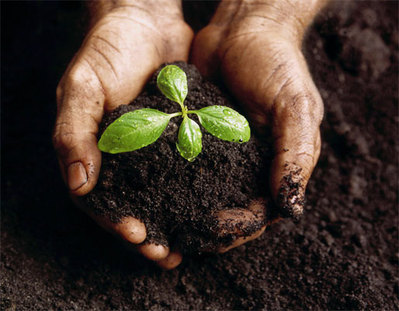
I'm taking a class right now on Soil Conservation & Management. Last night we talked about all the different components in soil and what holds it together in good times and bad. The conversation got me thinking about the one substance I like even more than soil, snow. As we talked about the science, I started to see similarities in soil structure and snowpack...it's all about how water and air moves through these environments. In snow, you've got different types of crystals that bond together which you study for avalanche safety. In soil, you've got different types of textures - clay, sand and silt along with rocks, bugs and roots - which bond together into aggregates. Aggregates are the clumps you find when digging in the soil. Similar names are used to describe soil clumps and snow crystals like columns, grains, plates, etc. The ability of water and air to move through these formations determines a soil or snowpack's stability and health. Comparing the two may be a stretch but give me a break. Ski season is just around the corner and I'm starting to day dream.
What makes me giddy about soil are all the interactions and symbiotic relationships that are happening below our feet. They are not only beneficial to all 700 million organisms but the environment and organisms above ground too. We should be as amazed by soil biology as we are by human biology. Okay get ready, I'm about to get my dork on...We all know that plants take carbon dioxide from the atmosphere storing it in their roots while emitting oxygen for us humans to breath. Here is my favorite part though...in order to get nitrogen and other nutrients needed to grow, plants give bacteria and fungus growing on their roots the sugar processed during photosynthesis. The fungus uses that sugar to function and help the plant absorb the soil's nitrogen through its roots - something the roots could not do on its own. While that's happening, the organic matter in the soil - compost, manure, decaying roots, etc. - provides carbon to loads of microbes which decompose these substances and gets the nitrogen ready so the fungus can feed it to the plant.
That's the nice part but when too much nitrogen is added to the soil, as is the case when synthetic nitrogen is applied, soil can't handle it...it overwhelms the system. The plants can only absorb so much nitrogen so most of it runs-off polluting groundwater and waterways. Meanwhile, the microbial in the soil gets thrown out of whack and the bad guys proliferate eating all the organic matter they can get their hands. Soon the soil structure starts to degrade because there is nothing left for them to eat. The soil becomes more compacted without the presence of organic matter losing the ability for water and air to move freely. This is how soil becomes vulnerable to drought because unhealthy soil can't retain water. And when it does rain, the water runs off the dry soil leading to erosion. The fringe benefit of all this ...since the microbes ate all the organic carbon matter, the soil isn't sequestering carbon like it should. The soil is basically just holding up the plant which is now addicted to chemicals for growth. Soil could be one of our biggest assets to mitigating climate change if we allowed it to keep the carbon under ground.
In conventional farming with all its applications and inputs, soil is being treated like dirt. It deserves better!

 RSS Feed
RSS Feed
